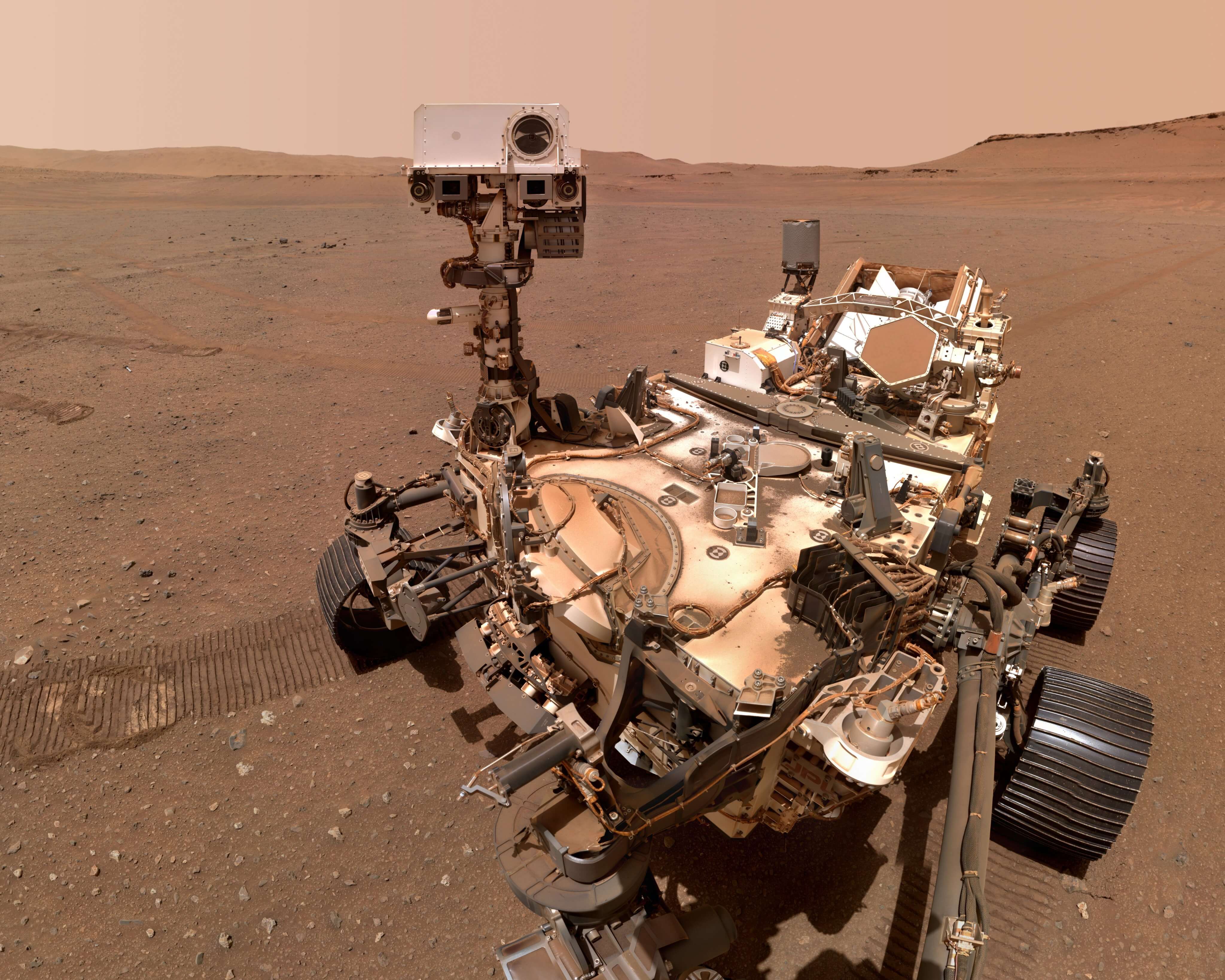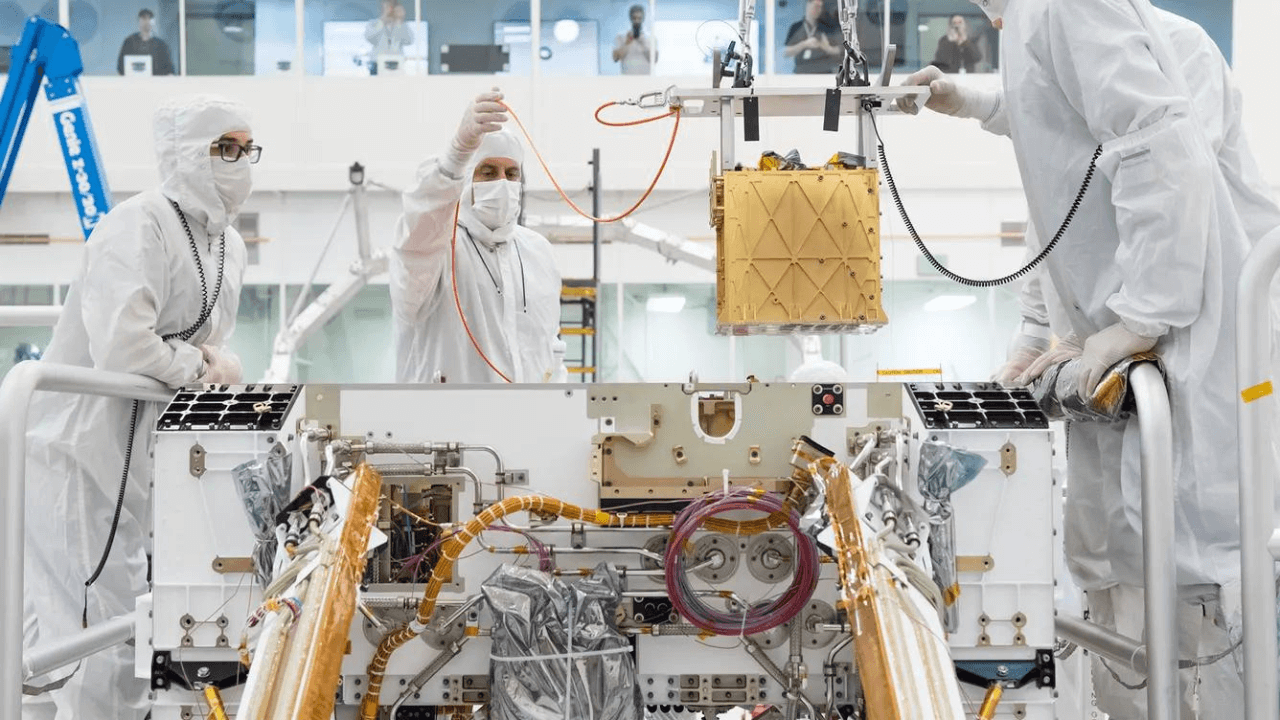NASA’s Mars Oxygen In-Situ Resource Utilization Experiment (MOXIE) on the Mars Perseverance rover has achieved a significant milestone and is considered a mission success. Since 2021, MOXIE has successfully generated a total of 122 grams of oxygen, producing approximately 12 grams of oxygen per hour. To put this into perspective, NASA likened this achievement to producing enough oxygen for a small dog to breathe comfortably for about 10 hours.
This accomplishment exceeds NASA’s initial goal for MOXIE, demonstrating its capability to generate oxygen at a rate higher than expected. Moreover, the generated oxygen is of excellent quality, with a purity level of 98% or better. This breakthrough is a promising development for future human missions to Mars and the utilization of Martian resources to support life and exploration.
Significance of MOXIE
- The Mars Oxygen In-Situ Resource Utilization Experiment (MOXIE) has completed its 16th and final oxygen generation operation aboard NASA’s Perseverance rover.
- This device, roughly the size of a microwave oven, has exceeded expectations, demonstrating its ability to extract oxygen from Mars’ atmosphere.
- MOXIE’s impressive performance highlights the feasibility of producing oxygen on Mars, which could be crucial for future astronauts by supplying breathable air and rocket propellant.
Developing technologies like MOXIE, which enable the utilization of resources on celestial bodies like the Moon and Mars, is a critical step towards establishing a sustained lunar presence, fostering a robust lunar economy, and supporting the eventual human exploration of Mars.
About MOXIE
The Mars Oxygen In-Situ Resource Utilization Experiment, or MOXIE, plays a crucial role in NASA’s preparations for human exploration of Mars. MOXIE’s primary mission is to test a method for future explorers to generate oxygen from the Martian atmosphere.
MOXIE achieves this by employing an electrochemical process that separates one oxygen atom from each molecule of carbon dioxide drawn from Mars’ thin atmosphere. As these gases pass through the system, their purity and the quantity of oxygen produced are carefully analyzed.
Future Missions
To enable a crew of human explorers to launch from Mars, they will require a substantial amount of oxygen, approximately 25 to 30 tons, which is equivalent to the weight of a tractor-trailer. Generating this volume of oxygen would necessitate a substantial power plant, ranging from 25,000 to 30,000 watts. In comparison, the power system of the Perseverance rover provides only about 100 watts. Consequently, MOXIE can only produce a small fraction of the oxygen that a future, larger-scale system, often referred to as “Big MOXIE,” would need to generate.
First of its Kind
While many of the experiments conducted by the Perseverance rover address the mission’s primary scientific objectives, MOXIE had a distinct focus on advancing future human exploration.
- MOXIE marked the first-ever demonstration of technology that could be crucial for human survival on Mars and for eventual departure from the Red Planet.
- The ability to produce oxygen on Mars holds immense significance for future missions.
- One of its most critical applications would be as a source of rocket propellant, a resource needed in substantial quantities to launch rockets carrying astronauts for their return journey to Earth.
Rather than transporting large quantities of oxygen from Earth, future astronauts could potentially rely on resources found on Mars to sustain themselves. This concept, known as in-situ resource utilization (ISRU), has become an increasingly important area of research. It envisions humans using materials available on the Martian surface to support their needs, making future missions to Mars more sustainable and self-sufficient.
Future Focus
- The next phase of advancing oxygen production on Mars wouldn’t necessarily involve building MOXIE 2.0, although NASA has gained valuable insights into how to design a more efficient version of the instrument.
- Instead, the next step would entail developing a comprehensive system that incorporates an oxygen generator similar to MOXIE, along with the capability to liquefy and store the produced oxygen.
- Furthermore, NASA is keen to diversify the range of technologies tested on Mars.
- While MOXIE has been a significant achievement, the agency is eager to explore and demonstrate various other technologies that can contribute to the success of future human missions to the Red Planet.
- This emphasis on innovation and versatility is crucial for advancing our understanding and capabilities for Mars exploration.
About Mars Rover Perseverance’s Mission
The Mars 2020 Perseverance mission has several key objectives, including astrobiology, the search for signs of ancient microbial life, characterizing Mars’ geology and past climate, and paving the way for future human exploration of the Red Planet. Importantly, this mission marks the first time that Martian rock and regolith (broken rock and dust) will be collected and cached for potential return to Earth.

In subsequent missions, conducted in cooperation with the European Space Agency (ESA), spacecraft will be sent to Mars to retrieve these sealed samples from the Martian surface and bring them back to Earth for comprehensive analysis.
The Mars 2020 Perseverance mission aligns with NASA’s Moon to Mars exploration strategy, which includes Artemis missions to the Moon as a crucial step in preparing for eventual human exploration of Mars.
- Weekly Current Affairs 2025 PDF For Bank, SSC, UPSC Exams
- Unsung Heroes of India: 10 Unknown Freedom Fighters You Should Know
- 26 December Current Affairs 2023 in English
- Daily Current Affairs 2025, Check Today’s Current Affairs
- April Month Current Affairs 2024, Download PDF
- June Month Current Affairs 2024, Download PDF

Hello, I’m Aditi, the creative mind behind the words at Oliveboard. As a content writer specializing in state-level exams, my mission is to unravel the complexities of exam information, ensuring aspiring candidates find clarity and confidence. Having walked the path of an aspirant myself, I bring a unique perspective to my work, crafting accessible content on Exam Notifications, Admit Cards, and Results.
At Oliveboard, I play a crucial role in empowering candidates throughout their exam journey. My dedication lies in making the seemingly daunting process not only understandable but also rewarding. Join me as I break down barriers in exam preparation, providing timely insights and valuable resources. Let’s navigate the path to success together, one well-informed step at a time.






